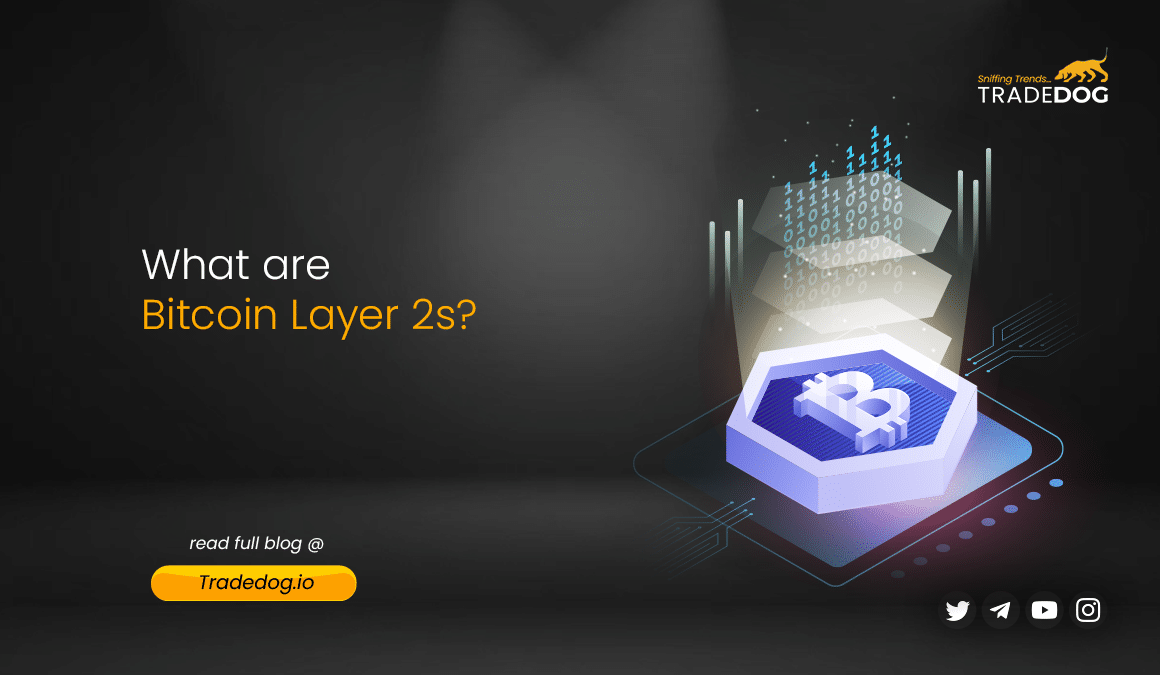Quick Links
Bitcoin (BTC) since its inception in 2008 has revolutionized finance with its decentralized approach. As the first and most valuable cryptocurrency, it has garnered immense interest from individuals, governments, and established financial institutions. However, Bitcoin’s success story has a hidden chapter: its struggle with scalability. Bitcoin’s core design limits the number of transactions it can process per second. This bottleneck creates congestion, especially during peak usage.
The consequences? Transactions take longer to confirm and incur high fees, hindering Bitcoin’s potential as a widely used everyday payment method. These limitations highlight the urgent need for scaling solutions to ensure Bitcoin can handle the growing demand placed upon its network. This is where Layer 2 solutions come into play. Designed to operate on top of the Bitcoin blockchain, these solutions aim to increase transaction throughput, reduce costs, and improve the overall scalability of the network.
What are Bitcoin Layer 2s?
Bitcoin’s limited transaction processing capacity leads to network congestion and high fees, especially during peak traffic. Scaling the Bitcoin blockchain itself isn’t feasible due to the Blockchain Trilemma, which states that a blockchain network can only optimize two out of three pillars: decentralization, security, and speed/scalability.
Bitcoin Layer 2s are networks that operate on top of the main Bitcoin blockchain. They aim to reduce Layer 1 load by bypassing its limitations and leveraging its strengths. Their primary function is to enhance the blockchain’s capacity to process transactions, but they can also improve usability in several other ways. These solutions aim to improve transaction throughput, reduce confirmation times, and lower transaction costs, thereby enhancing the overall efficiency of the Bitcoin network. Additionally, Layer 2s have also introduced advanced functionalities such as smart contracts, DeFi services, and NFTs to the Bitcoin ecosystem.
How Do Bitcoin Layer 2s Work?
State Channels
State channels provide a mechanism for conducting off-chain transactions between parties. These channels establish private communication channels that maintain transaction records off-chain. Within a state channel, participants can engage in multiple transactions without the need for on-chain processing. This approach significantly reduces congestion and transaction fees on the main blockchain. When a state channel is closed, only the final balance of the channel is recorded on the main blockchain, ensuring rapid and low-cost transactions.
Rollups
Rollups operate by consolidating multiple off-chain transactions into a single transaction that is settled on the main blockchain. There are two primary types of rollups: optimistic rollups and zero-knowledge (ZK) rollups. Optimistic rollups assume transaction validity unless challenged by a fraud-proof. In case of fraudulent transactions, they are reversed, and penalties are applied. On the other hand, ZK rollups utilize cryptographic proofs to validate transaction legitimacy without revealing details, thereby enhancing security and privacy.
Sidechains
Sidechains are independent blockchain networks that operate alongside the mainnet. They facilitate the movement of assets between the main chain and the sidechain through a two-way peg or bridge. Sidechains enable smart contract functionality for Bitcoin, allowing developers to build decentralized applications (dapps) and explore new use cases. By leveraging sidechains, Bitcoin can expand its capabilities beyond its native features, opening up possibilities for decentralized finance (DeFi), non-fungible tokens (NFTs), and other innovative applications.
Leading Bitcoin Layer 2s
Lightning Network
The Lightning Network is a “Layer 2” payment protocol that operates on top of a Bitcoin. It is designed to enable fast transactions among participating nodes. It utilizes off-chain payment channels to bypass network congestion, which ensures nearly instant transactions and lower fees. The network achieves this by creating off-chain payment channels. Essentially, these channels keep a ledger of transactions between two parties and only interact with the underlying blockchain when the channel participants want to close the channel and settle their net balances.
Liquid Network
The Liquid Network is a federated sidechain of the Bitcoin blockchain, which means it’s a separate blockchain that works in tandem with the Bitcoin blockchain. It was designed to improve transaction speed, privacy, and reliability for Bitcoin users. The Liquid Network uses its cryptocurrency, L-BTC, which is pegged to Bitcoin. This means that for every L-BTC, there is an equivalent amount of Bitcoin held in a reserve. Transactions on the Liquid Network are settled every minute, which is significantly faster than the 10-minute block time on the Bitcoin network
Stacks
Stacks enhances Bitcoin by introducing smart contracts on Bitcoin. It achieves this by linking transactions on a separate chain to the Bitcoin blockchain. This allows developers to build decentralized applications (dApps) and explore functionalities like DeFi and NFTs. It utilizes a unique consensus mechanism called Proof-of-Transfer (PoX) where transactions on the Stacks chain reference existing Bitcoin transactions for security. Stacks also has its token (STX) used for network security and rewarding miners who validate transactions. Smart contracts on Stacks are written in Clarity, a language specifically designed for this platform.
Rootstock (RSK)
Similar to Stacks, Rootstock is another sidechain connected to Bitcoin. However, it takes a different approach by being compatible with the Ethereum Virtual Machine (EVM). This compatibility allows developers to leverage existing tools and functionalities from the Ethereum ecosystem to build DeFi applications on the Bitcoin network. Rootstock utilizes a modified version of Proof-of-Stake (PoS) for reaching consensus within the network. Smart contracts on Rootstock are written in Solidity, the same language used for developing smart contracts on Ethereum.
Comparison
| Lightning Network | Liquid Network | Stacks | Rootstock | |
| Type | Channel | Sidechain | Smart contract layer | Sidechain |
| Year of Launch | 2016 | 2018 | 2018 | 2015 |
| TPS | 1 million | 500 | 10+ | 300 |
| TVL | $303.55m | – | $120.82m | $188.38m |
| Smart contract feature | No | Yes | Yes | Yes |
| EVM-compatible | No | No | No | Yes |
| Programming language | Multiple | Simplicity | Clarity | Solidity |
| Native token | – | L-BTC | STX | RBTC |
Risks of Using Bitcoin Layer 2s
Centralization
Some Layer 2 solutions may introduce centralization risks, particularly those with a small number of validators or functionaries. This centralized control over transaction validation and network governance could compromise the decentralization principles of Bitcoin, potentially undermining the trust and security of the network.
Security Vulnerabilities
Layer 2 protocols may be susceptible to security vulnerabilities and bugs, leading to potential exploits or network disruptions. Users must exercise caution and conduct thorough due diligence when utilizing Layer 2 solutions to mitigate security risks and protect their assets from potential threats.
Usability Challenges
Bitcoin Layer 2s may present usability challenges for non-technical users, requiring familiarity with complex protocols and tools. Issues such as bridge access, wallet compatibility, and transaction management may pose obstacles to seamless user experiences, limiting the accessibility and adoption of Layer 2 solutions.
Future of Bitcoin Layer 2s
Bitcoin’s layer-2 networks are steadily growing despite being in their early stages compared to counterparts on other blockchains and Bitcoin is also now positioned favorably to realize its potential through a layered architecture similar to that of Ethereum that could lead to a surge in Bitcoin-based projects.
Looking ahead, Bitcoin Layer 2 solutions are poised to play a crucial role in the evolution of the Bitcoin network and its ecosystem. With ongoing developments and advancements in scalability, interoperability, and security, Layer 2 protocols are expected to unlock new opportunities for innovation and adoption within the Bitcoin community.









